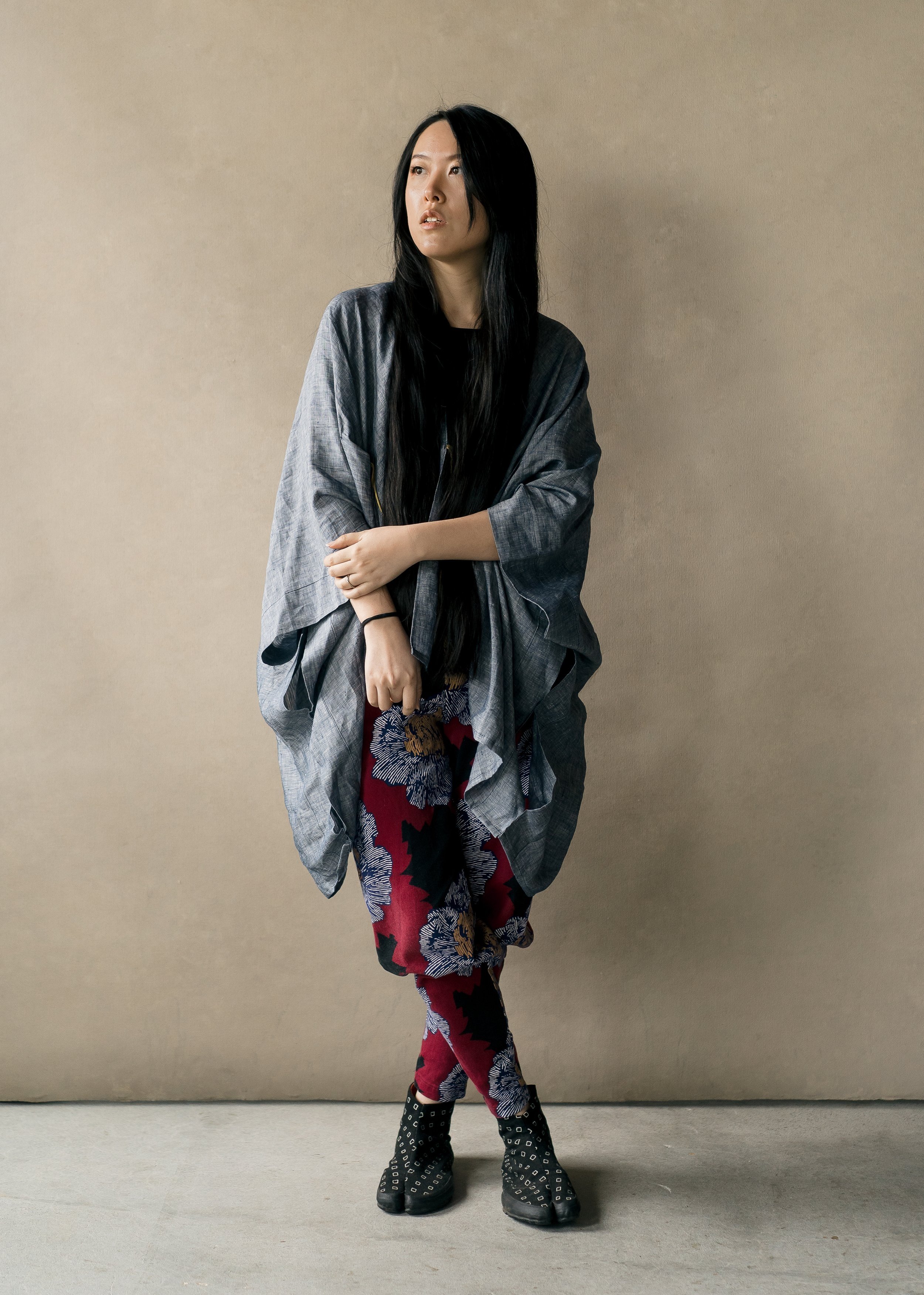tradition with a twist
Bremerton artist’s PNW take on ancient textile art
Words by David Albright
Japanese and Pacific Northwest sensibilities merge in Harada’s textile art. (Photo: Logan Westom Photography)
When I first encountered the textiles created by Erika Harada using a traditional Japanese fabric dying technique called katazome, there was something immediately familiar about them. They have a distinctly Japanese aesthetic—every line precisely placed, but with a weathered softness that keeps it from feeling sterile.
The subject matter offers familiarity too, at least for those of us lucky enough to call the Northwest home. Her “Birds of the Pacific Northwest” is topped by a cormorant—those unglamorous birds that are immediately recognizable to anyone who’s spent time near the waterways that surround the Kitsap Peninsula. It’s this mix of Japanese and Pacific Northwest sensibilities that draws me to Harada’s work.
Harada was born in Japan where she lived until she was five. But growing up she mostly lived on the East Coast where she worked as a graphic designer. It wasn’t until she moved to Bremerton in 2018 that she started her journey with katazome. “I spent much of my adult years with my primary tool being a MacBook, so tactile art forms really appeal to me now,” she told me. She credits the more relaxed pace of life in Kitsap with a newfound ability to focus on a slow and deliberate art form like katazome.
Her business name, “Kimagureya” actually means fickle, reflecting her past habit of bouncing from art form to art form. But katazome has broken that pattern. “Katazome is one of the longest lived things that I’ve stuck with, and I actually felt a passion towards, where I wanted to just get better and better at it.”
As she was starting off, getting good at katazome meant finding the right tools, and for an art form that’s deeply rooted in a specific place, that meant going to the source. Once a month a new box arrived from Japan containing tools like Surikomi brushes, densely packed with bristles of deer hair, Mochiko, a glutinous sweet rice flour used as a paste, and Katagami, a Japanese craft paper made with a specialized process involving fermented persimmon juice.
Katazome can be traced back to the sixth century in Japan where the process, similar to screen printing, is often used for practical purposes like kimonos and shop signage. The techniques are passed down from masters to apprentices who can spend decades perfecting their skills.
Living in Kitsap, Harada doesn’t have that luxury, or that pressure.
As she has developed her own practice, she has become less strict about using only tools from Japan. The knife she uses now for spreading the paste that fills the stencil, for example, she made using a piece of wood she found in her backyard.
The more her art practice grows, and the more she adapts it to the subject matter and tools found in the region, the more she makes it her own. “I think in Japan you always strive towards perfection,” she says, referencing the masters who practice the skill for their whole lives. “Obviously that’s not possible for me. So I’ve had to sort of let go of that idea—the idea that I’m doing a fully traditional art. It’s OK to make modifications here and there, and you know, I’m not fully Japanese either!”
Harada’s mother is from Japan, while her dad is Nissei, or second-generation Japanese-American. As what she calls a “1.5 generation” Japanese-American, her heritage is important to her and her affinity for traditional Japanese methods of craft is an extension of that. Since moving to Kitsap, she’s enjoying learning more about the Nordic and Pacific Islander traditions and history that are present here too. “It’s cool to me that the area is actually rather culturally and ethnically diverse,” she said, “I think there’s a lot of us here in Kitsap who are very proud of our ancestral traditions and roots, and feel a shared respect for each other because of this.”
Photo: Ericka Harada


